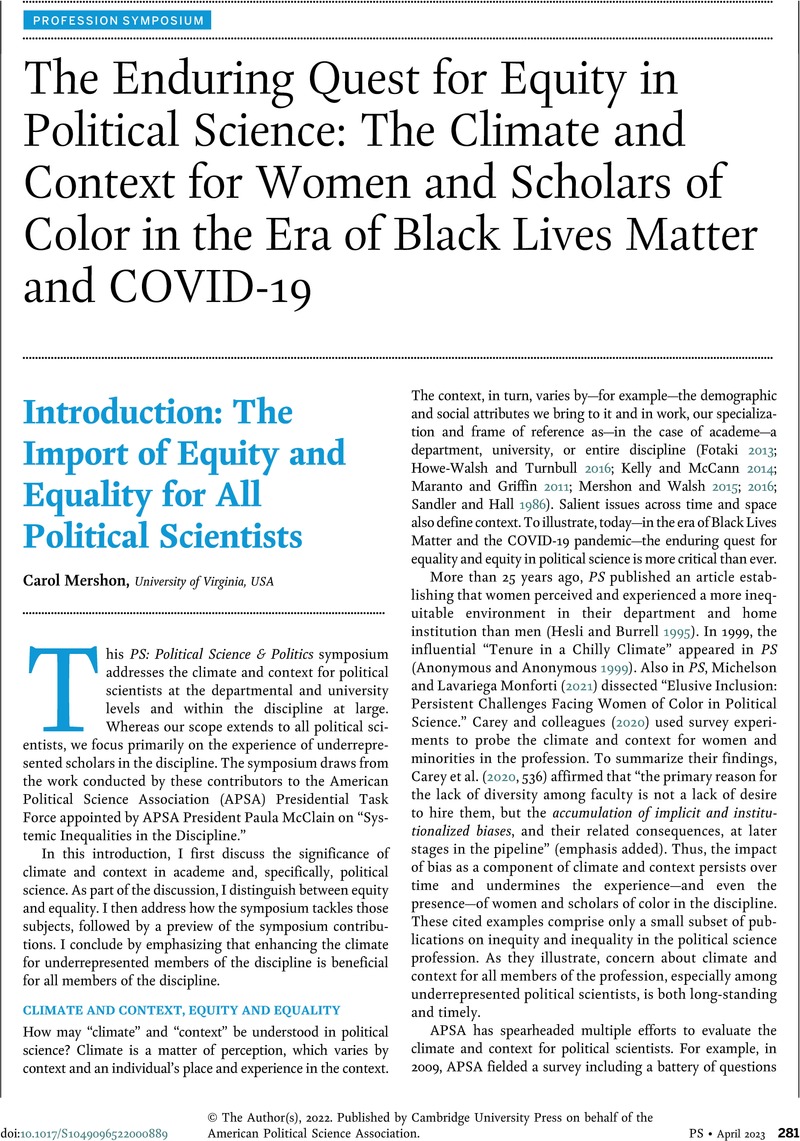No CrossRef data available.
Article contents
Introduction: The Import of Equity and Equality for All Political Scientists
Published online by Cambridge University Press: 25 November 2022
Abstract

- Type
- The Enduring Quest for Equity in Political Science: The Climate and Context for Women and Scholars of Color in the Era of Black Lives Matter and COVID-19
- Information
- Copyright
- © The Author(s), 2022. Published by Cambridge University Press on behalf of the American Political Science Association


